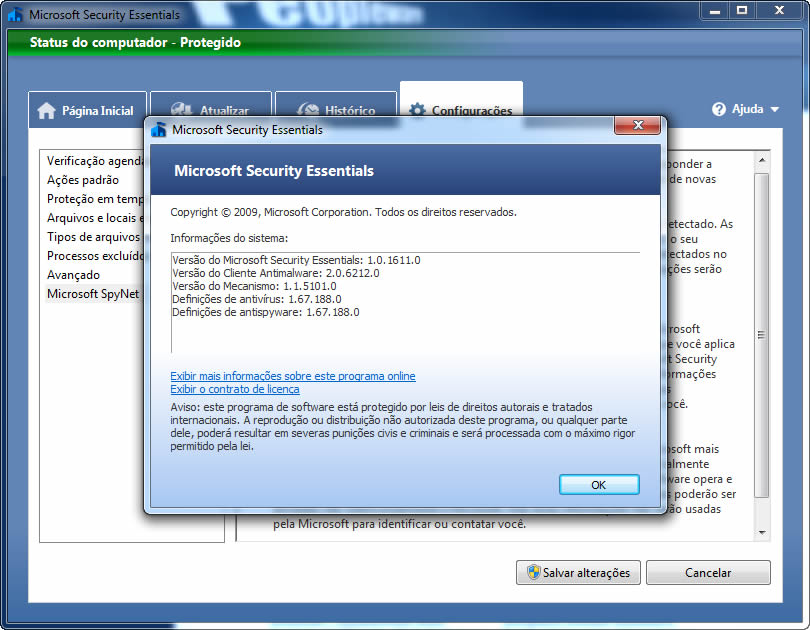
 IP Address Management (IPAM): Extended to support role-based access control, allowing for fine-grained control over which users can view or change configurations for DHCP reservations, scopes, IP address blocks, DNS resource records, etc. Windows Defender is available in a Server Core installation, and is installed and enabled by default. Windows Deployment Services: Support for managing WDS via PowerShell. Server Message Block: Performance and event logging quality improvements, support for Hyper-V Live Migration over SMB, bandwidth prioritization management, and the ability to remove SMB 1.0 support. Alongside this, a new "Idle Worker Process Page-Out" configuration option has been added to application pools to instruct Windows to page-out the process if it has been idle for the idle time-out period (by default, 20 minutes). To improve scalability, if IIS is configured with 100 or more web sites, by default it will not automatically start any of them. Internet Information Services 8.5: Support for logging to Event Tracing for Windows and the ability to log any request/response headers. Faster VM deployment (approximately half the time). Upgrades from driver emulators to synthetic hardware drivers to minimize legacy support. User interface changes reflecting Windows 8.1, including visible Start button. Integrated Office 365 support (Essentials edition). Windows PowerShell v4, which now includes a Desired State Configuration (DSC) feature. Deduplication for VHD: Reduces the storage space for VHD files with largely similar contents by storing the similar contents only once. Automated Tiering: Storage Spaces stores most frequently accessed files on fastest physical media. The following features are introduced in Windows Server 2012 R2: The Windows Store must be manually enabled. Windows Server 2012 R2 Start Screen, including Internet Explorer 11 and the Windows Store.
IP Address Management (IPAM): Extended to support role-based access control, allowing for fine-grained control over which users can view or change configurations for DHCP reservations, scopes, IP address blocks, DNS resource records, etc. Windows Defender is available in a Server Core installation, and is installed and enabled by default. Windows Deployment Services: Support for managing WDS via PowerShell. Server Message Block: Performance and event logging quality improvements, support for Hyper-V Live Migration over SMB, bandwidth prioritization management, and the ability to remove SMB 1.0 support. Alongside this, a new "Idle Worker Process Page-Out" configuration option has been added to application pools to instruct Windows to page-out the process if it has been idle for the idle time-out period (by default, 20 minutes). To improve scalability, if IIS is configured with 100 or more web sites, by default it will not automatically start any of them. Internet Information Services 8.5: Support for logging to Event Tracing for Windows and the ability to log any request/response headers. Faster VM deployment (approximately half the time). Upgrades from driver emulators to synthetic hardware drivers to minimize legacy support. User interface changes reflecting Windows 8.1, including visible Start button. Integrated Office 365 support (Essentials edition). Windows PowerShell v4, which now includes a Desired State Configuration (DSC) feature. Deduplication for VHD: Reduces the storage space for VHD files with largely similar contents by storing the similar contents only once. Automated Tiering: Storage Spaces stores most frequently accessed files on fastest physical media. The following features are introduced in Windows Server 2012 R2: The Windows Store must be manually enabled. Windows Server 2012 R2 Start Screen, including Internet Explorer 11 and the Windows Store. 
Windows Server 2012 R2 was succeeded by Windows Server 2016, which is derived from the Windows 10 codebase. Windows Server 2012 R2 is derived from the Windows 8.1 codebase, and runs only on 64-bit processors. It is a cumulative set of security, critical and other updates. It is the successor to Windows Server 2012, and is based on the Windows 8.1 codebase.Ī further update, formally designated Windows Server 2012 R2 Update, was released in April 2014. It was unveiled on June 3, 2013, at TechEd North America, and released on October 18 of the same year.

Windows Server 2012 R2, codenamed "Windows Server Blue", is the seventh version of the Windows Server operating system by Microsoft, as part of the Windows NT family of operating systems. Paid support via the Extended Security Updates program until October 13, 2026, only for volume licensed editions.Mainstream support ended on October 9, 2018.







 0 kommentar(er)
0 kommentar(er)
